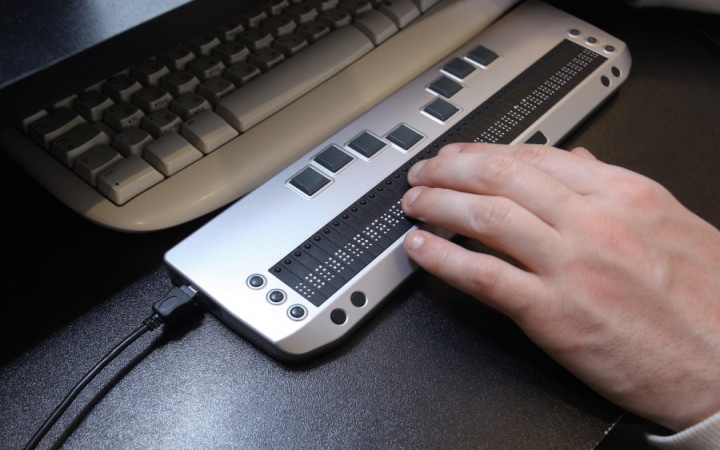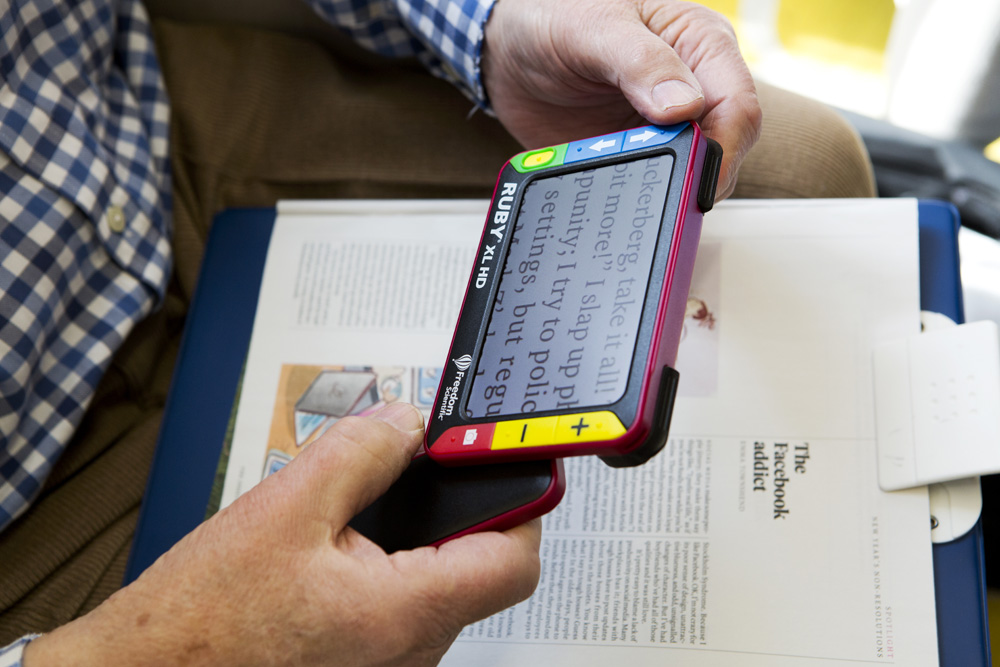Screen Readers for the Blind: Essential Devices for Digital Access
Screen Readers for the Blind: Essential Devices for Digital Access
Blog Article
Enhancing Lives With Advanced Assistive Instruments for the Blind
The assimilation of sophisticated assistive gadgets for the blind is transforming how individuals experience their environments and engage with their areas. Developments such as enhanced reality wise glasses and advanced electronic traveling aids not only help with navigation yet also enhance general top quality of life. These innovations foster a feeling of freedom and self-efficacy among customers, allowing them to take on day-to-day jobs with newly found self-confidence. The implications of these developments extend past plain capability; they test social understandings of impairment and independence. What does this development mean for the future of assistive modern technology and its role in empowering people?
Summary of Assistive Instruments
Assistive gadgets for the blind include a varied range of tools and innovations developed to boost independence and enhance the lifestyle for people with visual disabilities. These tools satisfy numerous demands, from navigating and flexibility to communication and daily job monitoring.
Among the primary groups of assistive devices includes movement aids, such as white walking canes and guide canines, which help customers navigate their environments securely. Digital travel help, outfitted with sensors and audio feedback, likewise play a considerable function in wheelchair improvement.
Furthermore, gadgets that help with everyday living activities, such as flexible kitchen tools, Braille tags, and speaking watches, empower people to carry out jobs individually. Interaction aids, consisting of display visitors and Braille display screens, promote access to info and allow individuals to involve efficiently with the electronic world.
Furthermore, low-tech services like amplifying glasses and large-print materials remain crucial for numerous individuals. Collectively, these assistive tools offer not only as functional devices but also as important enablers of freedom, cultivating better involvement in a world that typically focuses on sighted experiences. Their integration right into day-to-day life is necessary for advertising inclusivity and enhancing general wellness for those with visual problems.
Innovative Technologies in Use
Innovation in modern technology has actually dramatically transformed the landscape of tools available for individuals with aesthetic problems. Amongst one of the most significant advancements are smart glasses incorporated with enhanced fact, which supply real-time navigation aid and things recognition. These devices leverage advanced video cameras and fabricated intelligence to supply auditory signs, boosting the customer's spatial understanding and autonomy.
Furthermore, mobile applications have actually arised as powerful resources, allowing users to determine money, reviewed message aloud, and navigate unfamiliar environments through spoken guidelines. Devices such as Braille screens and refreshable Braille devices continue to advance, providing seamless connection with computer systems and mobile phones, consequently boosting communication and accessibility to information.
Wearable modern technology, including smartwatches outfitted with voice-activated features, further encourages individuals by promoting quick access to alerts and notifies without calling for aesthetic engagement. Tactile maps and 3D printing are likewise gaining traction, using concrete representations of spaces that aid in alignment and mobility training.
Collectively, these innovative innovations not just enhance the every day lives of visually impaired people yet also foster better freedom, inclusivity, and interaction with the wider community, consequently improving perceptions of access. (Assistive technology for the blind)
Individual Stories of Empowerment
Empowerment typically emerges from individual experiences that highlight the transformative effect of modern technology on individuals with aesthetic impairments. Take, for example, the story of Sarah, a young artist that regained her enthusiasm for painting via the use of a clever walking stick equipped with obstacle discovery. This gadget not only promoted her flexibility yet instilled a newly found self-confidence, allowing her to browse public spaces independently and pursue her creative endeavors.

These stories underscore the profound results that advanced assistive tools can carry everyday life. By allowing people to conquer barriers, innovation promotes a feeling of autonomy and self-worth. Such empowerment tales act as a testimony to the capacity of advancement, highlighting how the right devices can dramatically boost top quality of life and open doors to new possibilities for those with visual problems.
Advantages of Advanced Solutions
How can advanced services essentially enhance the lives of individuals with visual impairments? The integration of sophisticated innovation into assistive devices considerably changes everyday experiences for those influenced by vision loss. These advanced options provide extraordinary freedom, allowing individuals to navigate their environments with self-confidence. Devices such as wise walking canes furnished with sensors, navigation applications, and wearable modern technology are developed to give real-time feedback, boosting spatial recognition and decreasing the risks linked with movement.
Furthermore, advanced assistive technologies cultivate social incorporation by assisting in communication and communication. Voice-activated devices and applications permit individuals to access info and engage with their surroundings separately, damaging obstacles that previously prevented their engagement in educational, specialist, and social settings.
Furthermore, the personalization and versatility of these remedies accommodate the diverse demands of customers, thus improving their general lifestyle. Improved performance, such as things acknowledgment and text-to-speech capabilities, encourages individuals with visual problems to execute tasks that they may have once located challenging. Ultimately, progressed assistive modern technologies not only improve freedom and security however also advertise self-respect and self-worth, enabling individuals to lead meeting lives.
Future Fads in Assistive Tech
As technology remains to develop, the landscape of assistive gadgets for the blind is poised for exceptional innovations that will even more improve availability and independence. Arising fads in assistive modern technology indicate a change toward raised integration of synthetic intelligence (AI) and equipment understanding, making it possible for devices to adapt to private customer needs in real-time. These innovations are expected to help with more user-friendly navigating systems that can determine barriers and provide audio comments, substantially enhancing outdoor mobility.
Furthermore, the growth of wearable technology, such as clever glasses outfitted with enhanced reality, will certainly enable customers to receive contextual information concerning their environments, therefore improving their spatial awareness. Furthermore, improvements in haptic modern technology guarantee to develop tactile feedback devices, permitting users to regard info via touch, boosting discovering and interaction with their setting.
Telecommunication advancements are likewise leading the way for remote support solutions, where experienced experts can supply support via video phone calls, guaranteeing support is easily easily accessible. As these fads unravel, the future of assistive tools for the blind will undoubtedly promote better freedom, get more empowering individuals to browse their world with confidence and convenience.

Conclusion
The assimilation of sophisticated assistive devices for the blind represents a significant advancement in promoting self-reliance and enhancing lifestyle. By utilizing cutting-edge modern technologies, these devices encourage users to navigate their environments with higher confidence and freedom. As the area remains to develop, continuous r & low nose bridge glasses d will likely produce a lot more sophisticated solutions, further changing the lived experiences of people with visual problems and promoting a greater sense of addition within society.
The integration of sophisticated assistive tools for the blind is transforming how people experience their environments and communicate with their neighborhoods. The integration of advanced technology into assistive devices substantially transforms daily experiences for those affected by vision loss.As innovation proceeds to progress, the landscape of assistive devices for the blind is positioned for exceptional innovations that will certainly even more enhance access and self-reliance. Arising fads in assistive technology show a change toward increased combination of synthetic knowledge (AI) and maker learning, enabling tools to adapt to private user requires in real-time.The assimilation of innovative assistive devices for the blind stands for a significant development in promoting independence and enhancing high quality of life.
Report this page